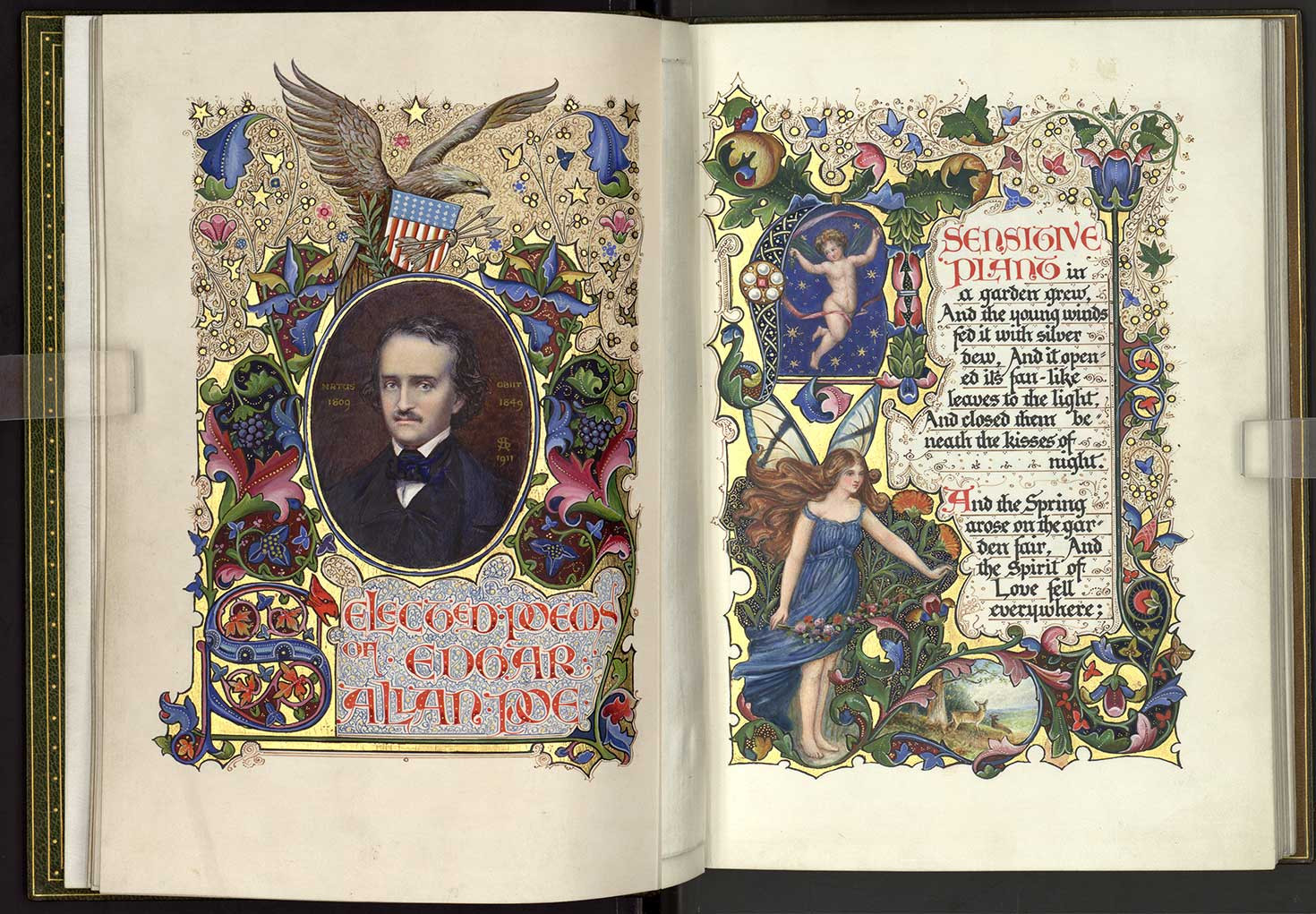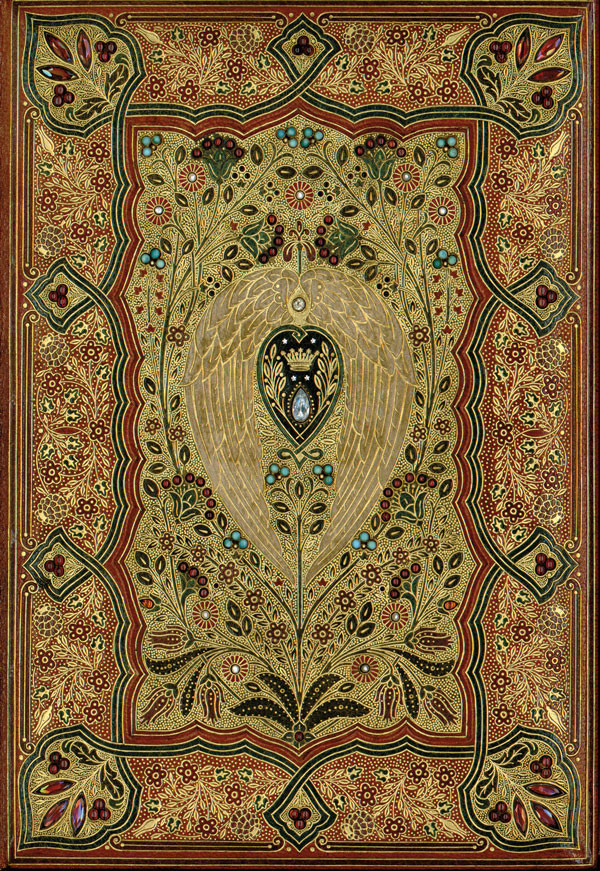Two more of the Ransom’s S&S manuscripts, Oliver Goldsmith’s The Hermit and James Russell Lowell’s The Vision of Sir Launfal, are handwritten in calligraphy on parchment by Alberto Sangorski (Francis’ older brother) with decorative borders and illuminated miniatures. Around 1905, Alberto had begun to produce illuminated manuscripts on vellum. These had elegant calligraphy, illuminated initials, and watercolor miniature paintings—all his own work. The early manuscripts were done for S&S, but in 1910, Alberto fell out with his brother and went to work for Riviere.
As for Francis and George, from 1909–1911, they worked on the “Great Omar”—a luxurious, large-format binding of the Rubaiyat with six separate designs on the covers, doublures, 1,050 jewels, and more than 5,000 morocco inlays. Alas, this book was lost on the RMS Titanic in 1912, and then, a few months later, in July of 1912, Francis drowned saving another swimmer’s life. Sutcliffe carried on the business, producing some very beautiful jeweled bindings, but the advent of World War I meant that the glory days were over. He died in 1936, and the firm changed hands and names.
Collectors of fine bindings were (and are still today) well aware of S&S. One in particular, a Brooklyn widow named Phoebe A.D. Boyle, had acquired forty-five S&S jeweled bindings and thirty-one of Alberto’s illuminated manuscripts during the 1910s and early 1920s. The collection was sold by Anderson’s New York in 1923. It was by far the greatest array of these masterpieces ever put together and can never be replicated. The Ransom Center, however, has four of her best, now reunited in Texas. According to Oram, “three of these books were donated by Mrs. Miriam Lutcher Stark, the fourth by William H. Koester. We are most grateful to these far-sighted collectors for preserving the future of these four books.”



















